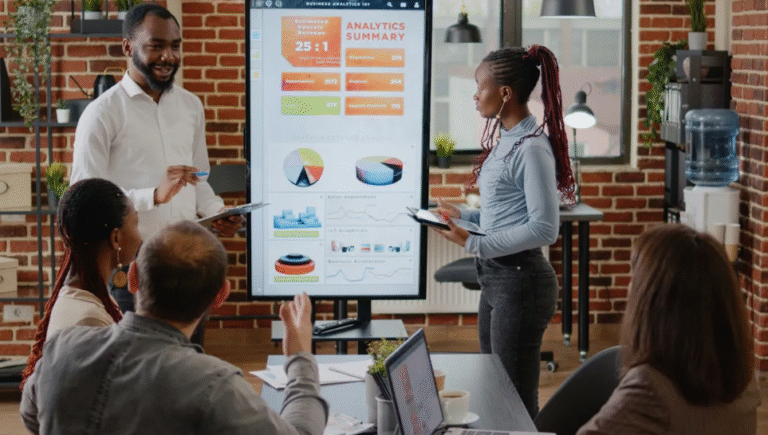Elevate Every Presentation with a Sleek Ceiling Recessed Projection Screen
When you walk into a room for a presentation, you can often tell how it’s going to feel before it even starts. The way your space is set up plays a big part in that. Chairs lined up neatly, lights adjusted just right, sound ready to go—and then there’s the screen.
If the screen looks clumsy or out of place, it can take away from the moment. But a ceiling projection screen has the opposite effect. It stays hidden until it’s needed, then lowers smoothly and instantly changes the focus of the room. It’s not just a tool—it becomes part of the presentation’s atmosphere.
Why the Reveal Matters
There’s something powerful about a reveal. Before the presentation starts, the front of the room looks open and uncluttered. No big white rectangle taking up wall space. Then, at just the right time, the screen appears.
This simple action pulls eyes forward. The audience feels that shift—it signals that the fundamental part of the session is beginning. With a fixed wall display, that moment is missing.
That’s why a ceiling projection screen stands out—it can create a transition that feels deliberate and professional.
A Clear View Without the Clutter
A fixed frame projection screen can look great in a cinema or a dedicated film-watching room. But in a space that’s used for many things—a conference room, a lecture hall, a shared event space—it’s not always practical to have a screen in view all the time.
A ceiling-recessed model solves that. It’s out of sight when you don’t need it, which keeps the room looking versatile and tidy. Then, when you need to present, it drops into place with no fuss. People see the content—nothing else is competing for their attention.
Helping the Presenter Take Control
Presentations are about more than slides and bullet points. They’re about pacing, flow, and keeping people interested. The way the visuals appear can help with that.
When a ceiling projection screen comes down right at the start, it feels like a cue. The audience instinctively knows to focus. The presenter can step into the moment with a visual that’s large, clear, and easy to see from anywhere in the room.
It’s not a flashy gimmick—it’s a way of making the beginning of a presentation feel like an event.
Fits the Mood of the Room
Every room has its style. Some are modern and sleek; others are warm and traditional. A permanent fixed frame projection screen can sometimes clash with that style, especially in multipurpose spaces.
A recessed ceiling model blends in with any design because it disappears completely when not in use.
The housing can be finished to match the ceiling, so it’s practically invisible. That means the room’s character stays intact, and the screen only becomes a visible element when you want it to.
Works Across Different Presentation Styles
Some presentations are formal—quarterly reports, investor briefings, and training sessions. Others are more creative—design pitches, workshops, product launches. In both cases, how you show the visuals matters.
A hidden ceiling unit can make the setup feel formal and prepared while still being flexible enough for more casual sessions. The same screen that you use for a high-stakes board meeting can be lowered for a casual Friday team talk without feeling out of place.
This adaptability is part of what makes the difference. The screen supports the presentation without dominating the space.
Drawing Attention to the Content
Audiences have short attention spans. On a busy day, people may walk into the room still thinking about emails, calls, or other tasks. Lowering the screen can reset that. It’s a small but powerful signal: now it’s time to watch and listen.
The surface of a good ceiling projection screen can display images evenly and without distortion. That means charts, videos, and text all look sharp and clear. In a room with lots of seating, it ensures that people in the back see the same quality as those in the front.
Making Every Moment Count
When you’re standing in front of a group—whether it’s ten people or two hundred—you want everything working in your favour. The way the screen appears, the way it fills the space, and the way it fades from view afterwards all play into that.
A recessed ceiling model helps you control those moments. It’s not just about hiding a screen—it’s about shaping the way people experience your presentation from start to finish.
Final Thought
Presentations are judged on the content but also on how they feel. The room, the lighting, the sound, and yes—the screen—all work together. A fixed screen can be fine, but it’s always there, part of the background. A recessed ceiling screen is different.
It can turn the start of a presentation into a moment, focus attention exactly when you want it, and leave the room looking clear and open the rest of the time. That’s how a screen can do more than display—it can help your presentation stand out.






